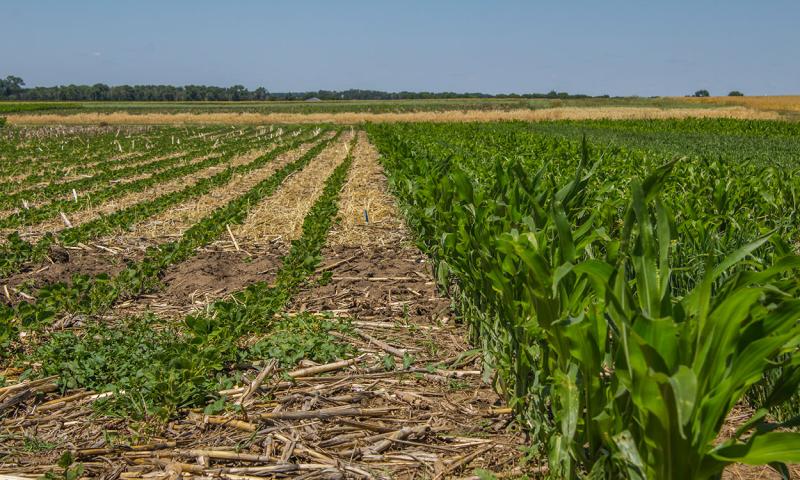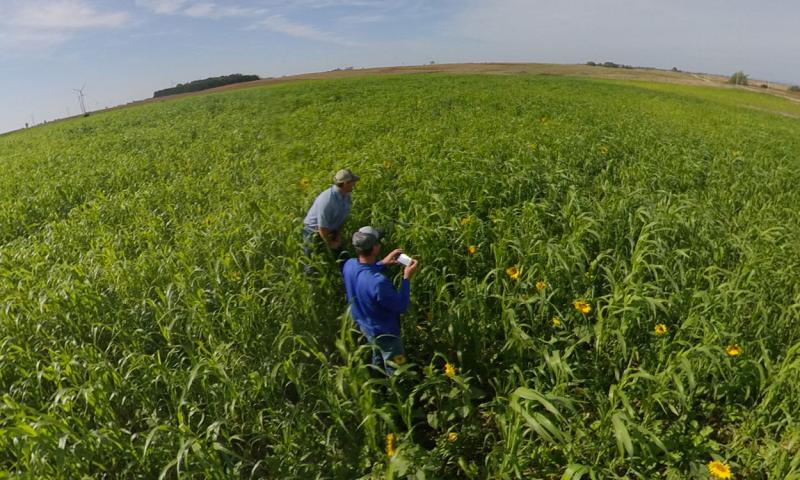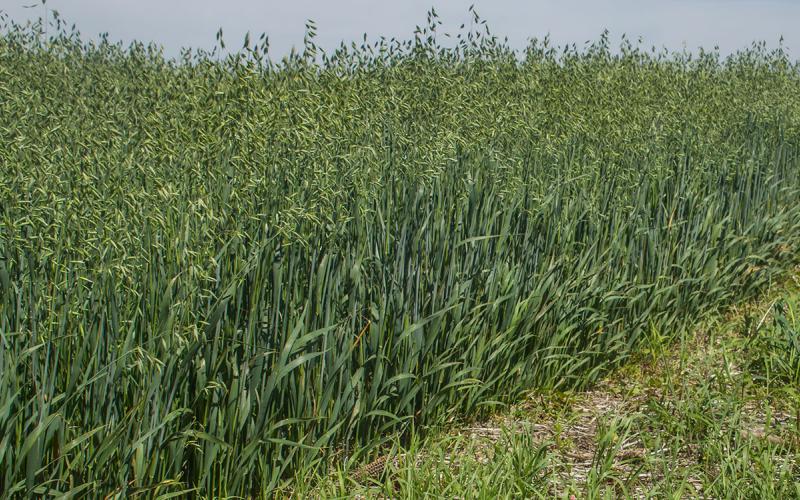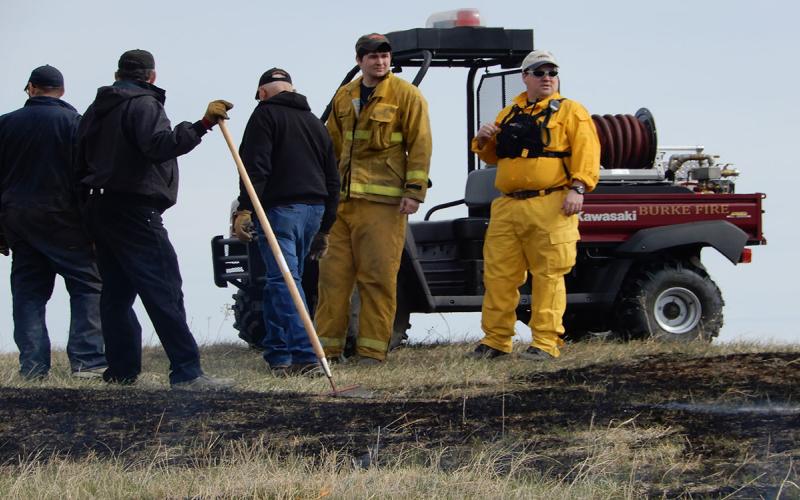![A green tractor planting seeds in a no-till field. Courtesy: United Soybean Board [CC BY 2.0] via Flickr](/sites/default/files/styles/image_width_800/public/2019-10/W-00433-00-no-till-planting-soybeans-field.jpg?itok=Me3H6MHP)
Carbon-focused discussions can be very confusing. So many terms and acronyms have gone through social and economic discussions. Thoroughly understanding topics, such as: carbon offsets, carbon credits, carbon footprint, carbon neutrality, carbon offsetting, carbon sinks, carbon credit certification, climate change, global warming, greenhouse gasses (abbreviated as GHG), fossil fuels, greenwashing, carbon life-cycle assessments, net zero, carbon dioxide (abbreviated as CO2), nitrous oxide (N2O), and methane (CH4) can be very overwhelming.
We at SDSU Extension may feel the same sense of being overwhelmed while attempting to provide our agricultural producers with unbiased, science-based information to help develop a better understanding of this chaotic topic. Whether you agree or not with any of these topics is your choice. However, it could happen that all of us in one way or another, through our use of fuels, fertilizers, crop production choices, equipment purchases, and prices received for our commodities, will be influenced by these factors. A better understanding of carbon topics will help address, not only producer and stakeholder concerns, but also in developing future policies and laws. Sometimes it is easy to overlook topics and issues that are difficult in nature, but sometimes these are the very topics that require the most attention, especially carbon-related issues.
Soil functions are foundations for global life and are critical for a quality food supply. Protecting and regenerating soil resources is vitally important for all forms of life and widely supported by scientific studies. SDSU Extension, along with many partners are working on common goals to improve our soil and water resources.
Soil Health Principles

The “Soil Health Principles” have come from educational efforts to help producers and landowners better understand the basics of soil health. The Soil Health Principles (South Dakota Soil Health Coalition) are the primary focus of soil health and conservation management and education in South Dakota. They include:
- Keeping the soil surface covered to protect against erosion
- Limiting or eliminating tillage
- Growing a living root as much as possible
- Using crop rotation variety and cover crops
- Integrating livestock on croplands.
At the same time, several greenhouse gases and carbon-focused models to mitigate the effects of climate change have been developed. Are soil health educational efforts and carbon discussions similar? The goal of this article is to evaluate only one carbon model, the COMMET Model, in accordance to the Five Soil Health Principles.
The COMET Model
The COMET-Farm model, developed by USDA/NRCS and Colorado State University, is a whole farm and ranch carbon and greenhouse gas accounting system. Several other carbon models exist, but many carbon-offset grants and programs identify COMET as an important guiding tool for making farm-level management decisions to reduce greenhouse gasses and store carbon in the soil.
The COMET model requires detailed inputs and is based on agronomic management data from each field (USDA/NRCS and Colorado State University). The model uses crop growth and production histories. The crop growth and development is based on the DAYCENT model to estimate the amount of CO2 removed from the atmosphere and resulting contributions of carbon into the soil.

Comet Model Inputs:
- Field location and boundary development.
- Historic management prior to year 2000.
- Baseline management from 2000 to 2020, which includes (data entered by year):
- Crop planting and harvest dates, grain or forage yield, and grazing; multiple crops can be included within a field boundary each year.
- Tillage management history.
- Manure application history.
- Fertilizer management that includes N and P rates.
- Liming application amount and application dates.
- Burning history.
- Scenario management decisions (what you might want to change).
- Any one of the scenario management factors compared with baseline can be changed for further comparisons.
Comet Model Outputs:
Outputs from the COMET model show the amount of each greenhouse gas (GHG) resulting from each input to show whether the soil is gaining or losing carbon. GHGs are converted to carbon dioxide equivalents where the new scenarios are compared with the baseline (actual) values for each field.
|
Soil Health Principle |
Addressed in COMET |
|
1) Keeping the soil covered. |
Yes, tillage type is included in model input questions. |
|
2) Greatly reducing or eliminating tillage. |
Yes, model increases soil carbon with less tillage. |
|
3) Growing a living root as much as possible. |
Yes, cover crop is an input question and perennials are included for non-cropland fields. |
|
4) Using crop rotation and variety. |
Yes, model includes cover crop compositions and yearly inclusions in crop rotations. Model accepts annual crop production records and therefore encompasses many years of inclusions and effects on the soil. |
|
5) Livestock integration. |
Yes, model includes livestock grazing and amounts of biomass consumed by animals. |
Summary
The COMET model does a good job of covering all of the soil health principles. However, the model requires a significant amount of time commitment for gathering and entering data into the program. Output from the model is very detailed, which could be difficult to interpret and relate to which crop management factors specifically contributed to the changes shown from the baseline to the scenario planning output. Help tutorials are included and are very helpful for interpreting model output. As we enter situations where carbon conversations are increasing by the day, tools like the COMET-Farm model need to be adaptive and changing to address the ever-changing status of modern agriculture.
References
- COMET Model, Whole Farm and Ranch Carbon and Greenhouse Gas Accounting System, USDA/NRCS and Colorado State University.
- Daycent5 model, Natural Resource Ecology Laboratory, Colorado State University, Fort Collins, CO 80523.
- The South Dakota Soil Health Coalition, Five Soil Health Principles.


